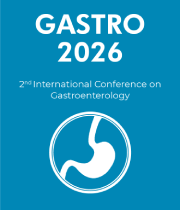Cholecystitis and Gallbladder Inflammation
Cholecystitis and gallbladder inflammation are two conditions that are closely related. Cholecystitis is an inflammation of the gallbladder, the organ responsible for storing bile produced by the liver. This condition can be caused by a number of factors, including gallstones, infection, trauma, or tumor. Gallbladder inflammation is an inflammation of the gallbladder wall and may or may not be caused by cholecystitis. Symptoms of cholecystitis and gallbladder inflammation can be similar and include abdominal pain, nausea, vomiting, fever, and jaundice. These symptoms can be worse after eating a meal, especially a fatty meal. It is important to seek medical attention immediately if any of these symptoms are experienced. Diagnosis of cholecystitis and gallbladder inflammation is typically done through an abdominal ultrasound and/or computed tomography (CT) scan. These tests can provide images of the gallbladder and its surrounding structures, as well as detect any potential blockages or inflammation in the area. Blood tests may also be done to check for infection or elevated levels of liver enzymes. Treatment of cholecystitis and gallbladder inflammation depends on the underlying cause. If gallstones are the cause, a procedure called a cholecystectomy may be necessary to remove the gallbladder. If an infection is present, antibiotics may be prescribed to help clear it. In cases of severe inflammation, surgery may be required to remove the gallbladder. In some cases, lifestyle changes may be enough to help relieve symptoms and prevent further complications. Eating smaller, more frequent meals and avoiding fatty, greasy, and spicy foods can help reduce symptoms. It is also important to drink plenty of fluids to keep the body hydrated and to avoid consuming too much alcohol. Regular exercise may also help reduce the risk of cholecystitis and gallbladder inflammation. Cholecystitis and gallbladder inflammation can be serious conditions that can cause significant pain and discomfort. It is important to seek medical attention if any symptoms are experienced and to follow the treatment plan outlined by a healthcare provider. Making lifestyle changes, such as eating a healthy diet and exercising regularly, can also help reduce the risk of developing these conditions.



